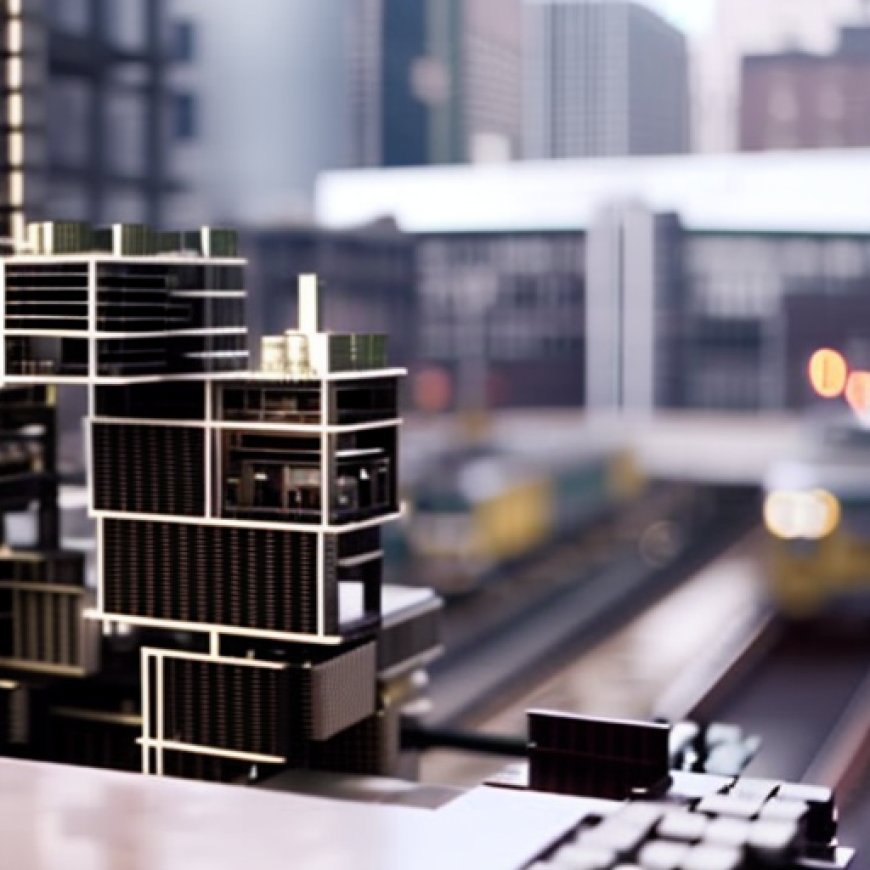Building Electrification Meets Modular Construction In Brooklyn
Building Electrification Meets Modular Construction In NYC Historic District CleanTechnica


Modular Homes: A Key Player in the Building Electrification Movement
Modular homes have traditionally been overlooked in the US housing market, mainly found in rural areas and suburbs. However, these homes have the potential to drive the building electrification movement forward, particularly if a business model can be developed to bring modular construction into cities. This approach could not only address the housing affordability crisis but also contribute to the decarbonization of new buildings on a large scale.
What is Modular Construction?
Modular construction involves fabricating building components in a factory and then assembling them on-site. While this method has gained popularity in Europe, Asia, and other parts of the world, the US has been slow to adopt it. However, modular construction offers significant time and cost savings compared to traditional on-site construction.
From a building electrification perspective, the delay in embracing modular construction is a missed opportunity for rapid decarbonization. In modular construction, components such as entire rooms or parts of rooms can be equipped with all-electric appliances and ventilation systems before leaving the factory. This approach allows for economies of scale, centralization, and supply chain efficiency, similar to the production methods used by automakers.
Besides building electrification, modular construction also contributes to reducing greenhouse gas emissions during the construction process. The Modular Building Institute cites studies showing a significant reduction in carbon dioxide emissions compared to traditional on-site construction.
The St. Felix Street Project: A Showcase for Modular Construction
CleanTechnica recently visited a new modular apartment building on St. Felix Street in downtown Brooklyn. This project, led by US startup Assembly OSM, serves as a test case for urban modular construction. The Assembly team had to ensure that the building complied with historic district specifications in New York City, including a brick-clad exterior.
Despite the challenges of working in a historic district, modular homes must still adhere to local building codes like any other home. The St. Felix Street project was designed as an all-electric building, including HVAC systems, with the exception of a gas backup emergency generator required by New York regulations.
Beyond Building Electrification
In addition to showcasing building electrification, the St. Felix Street project demonstrates how electrification aligns with energy-efficient technologies. By incorporating EPA EnergyStar-rated appliances, a modern HVAC system, and high-performance exterior insulation, Assembly estimates a 70% energy savings compared to conventional buildings.
The project also integrates passive house energy efficiency principles and WELL building standards adopted by the US Green Building Council. These standards prioritize human health and comfort, considering factors such as air quality, water quality, and lighting.
Modular construction also offers advantages beyond building electrification. It reduces noise and disruption associated with traditional construction methods, particularly in urban areas where construction-related street disruptions can lead to increased pollution from traffic.
The St. Felix Street project consists of eight components that were fabricated in a New Jersey factory over several months. These components were then transported to the site and stacked together in a single day, minimizing construction-related disruptions for the neighborhood.
Exploring Manufactured Homes
Manufactured homes are another potential area for the building electrification movement. Like modular construction, manufactured homes are built in a factory environment and are relatively affordable compared to conventional homes.
However, there are important distinctions to note. Manufactured homes are built on a wheeled chassis, allowing them to be transported to a site. They are typically considered personal property rather than real estate due to their mobility. Additionally, manufactured homes are primarily single-story structures, limiting their application in cities. In contrast, modular buildings can accommodate multi-family housing, townhouse developments, and even high-rise construction.
Affordability is a key consideration for both manufactured homes and modular construction. While manufactured homes are generally less expensive than conventional construction, local zoning regulations and disruptive behavior by corporate trailer park owners have posed challenges for this housing option in the US. Modular construction can also be costly, but Assembly’s cost-saving business model aligns with income-related housing incentives in New York. The Biden administration’s efforts to incentivize affordable housing could further support the building electrification movement.
Overall, modular homes have the potential to revolutionize the building electrification movement by providing a scalable and efficient approach to decarbonizing new buildings. By leveraging factory-style production methods and integrating energy-efficient technologies, modular construction can contribute to achieving the Sustainable Development Goals (SDGs) related to affordable housing (SDG 11), sustainable cities and communities (SDG 11), and climate action (SDG 13).
SDGs, Targets, and Indicators
1. Which SDGs are addressed or connected to the issues highlighted in the article?
- SDG 7: Affordable and Clean Energy
- SDG 9: Industry, Innovation, and Infrastructure
- SDG 11: Sustainable Cities and Communities
- SDG 13: Climate Action
The article discusses the potential of modular construction to address the housing affordability crisis, decarbonize new buildings, and reduce greenhouse gas emissions. These issues are connected to SDG 7 (Affordable and Clean Energy), SDG 9 (Industry, Innovation, and Infrastructure), SDG 11 (Sustainable Cities and Communities), and SDG 13 (Climate Action).
2. What specific targets under those SDGs can be identified based on the article’s content?
- SDG 7.2: Increase the share of renewable energy in the global energy mix
- SDG 9.4: Upgrade infrastructure and retrofit industries to make them sustainable
- SDG 11.1: Ensure access for all to adequate, safe, and affordable housing and basic services
- SDG 13.2: Integrate climate change measures into national policies, strategies, and planning
The article highlights the potential of modular construction to increase the share of renewable energy in the building sector (SDG 7.2), upgrade infrastructure for sustainable construction (SDG 9.4), provide affordable housing (SDG 11.1), and integrate climate change measures into building policies (SDG 13.2).
3. Are there any indicators mentioned or implied in the article that can be used to measure progress towards the identified targets?
- Carbon dioxide emissions savings compared to traditional on-site construction
- Energy savings in post-construction use compared to conventional buildings
- Number of modular buildings constructed in urban areas
- Number of affordable housing units built using modular construction
The article mentions carbon dioxide emissions savings achieved through modular construction compared to traditional on-site construction. This can be used as an indicator to measure progress towards SDG 13.2 (integrating climate change measures). The article also highlights the energy savings achieved in post-construction use of modular buildings compared to conventional buildings, which can be used as an indicator for SDG 7.2 (increasing the share of renewable energy). Additionally, the number of modular buildings constructed in urban areas and the number of affordable housing units built using modular construction can be used as indicators for SDG 9.4 (upgrading infrastructure) and SDG 11.1 (providing access to affordable housing).
SDGs, Targets, and Indicators Table
| SDGs | Targets | Indicators |
|---|---|---|
| SDG 7: Affordable and Clean Energy | 7.2: Increase the share of renewable energy in the global energy mix | – Carbon dioxide emissions savings compared to traditional on-site construction – Energy savings in post-construction use compared to conventional buildings |
| SDG 9: Industry, Innovation, and Infrastructure | 9.4: Upgrade infrastructure and retrofit industries to make them sustainable | – Number of modular buildings constructed in urban areas |
| SDG 11: Sustainable Cities and Communities | 11.1: Ensure access for all to adequate, safe, and affordable housing and basic services | – Number of affordable housing units built using modular construction |
| SDG 13: Climate Action | 13.2: Integrate climate change measures into national policies, strategies, and planning | – Carbon dioxide emissions savings compared to traditional on-site construction |
Behold! This splendid article springs forth from the wellspring of knowledge, shaped by a wondrous proprietary AI technology that delved into a vast ocean of data, illuminating the path towards the Sustainable Development Goals. Remember that all rights are reserved by SDG Investors LLC, empowering us to champion progress together.
Source: cleantechnica.com

Join us, as fellow seekers of change, on a transformative journey at https://sdgtalks.ai/welcome, where you can become a member and actively contribute to shaping a brighter future.







